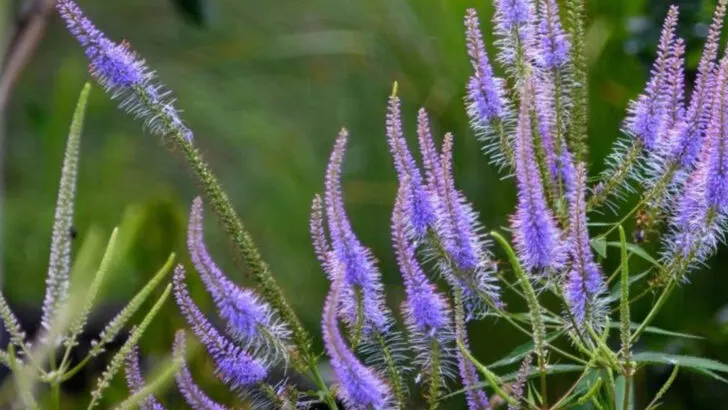When we think of pollinator-friendly gardens, we often picture lavender, coneflowers, or bee balm—and while those are fantastic staples, there’s a whole world of lesser-known plants that pollinators love just as much (sometimes even more). These underrated blooms and herbs don’t just draw in bees, butterflies, and hummingbirds—they also add surprising color, texture, and scent to your garden beds.
This month is the perfect time to plant these 20 hidden gems. Many of them are quick to establish, require minimal care, and thrive in diverse conditions—from sunny patios to shaded corners. Plus, several offer bonus benefits: edible leaves, fragrant flowers, or seed heads that birds will love once the season cools down. They’re also excellent choices for small gardens, urban balconies, or even container growing.
If you’re looking to make your outdoor space buzz with life, attract essential pollinators, and break away from the usual plant list, these little-known heroes belong on your planting list. You’ll be supporting local ecosystems, helping pollinators thrive—and giving your garden a fresh, vibrant edge that stands out.
Bee Balm

Bee balm, with its bright and spiky flowers, is a show-stopper in any garden setting. Known for its ability to attract a variety of pollinators, including bees, butterflies, and hummingbirds, it adds both beauty and biodiversity to your space. Its striking blooms come in shades of pink, red, and white, providing a colorful spectacle throughout the summer months.
Not just pretty, bee balm also releases a pleasant minty fragrance, making it a sensory delight for gardeners. Historically, Native Americans used bee balm for its medicinal properties, primarily for treating colds and fevers. This plant is more than just a pollinator magnet—it’s a piece of history.
Anise Hyssop

Anise Hyssop stands out with its tall, lavender flower spikes and aromatic leaves. This perennial herb is adored by bees and butterflies, who are drawn to its sweet, licorice scent. It’s a perfect addition for those looking to support pollinators while adding a touch of elegance to their garden.
The foliage, when crushed, releases an anise-like fragrance that’s both refreshing and inviting. Beyond its pollinator-friendly nature, Anise Hyssop has been traditionally used for medicinal teas and culinary purposes. Its dual benefits make it a valuable plant for both gardeners and pollinators alike.
Joe-Pye Weed

Joe-Pye Weed might not have the most appealing name, but it’s a powerhouse for attracting pollinators. Its tall stature and clusters of mauve flowers make it a favorite among bees and butterflies. This hardy perennial thrives in damp soil, making it an excellent choice for wet garden areas.
Traditionally used by Native Americans to treat fevers and other ailments, Joe-Pye Weed adds historical richness to its garden appeal. Its presence is a testament to nature’s resilience and the interconnectedness of ecosystems, making it a must-have for pollinator-friendly gardens.
Mountain Mint

Mountain Mint is a hidden treasure for gardeners seeking to attract pollinators. With its dense clusters of small white flowers and aromatic foliage, this perennial herb is irresistible to bees and butterflies. Its minty aroma is a refreshing addition to any space, creating a sensory experience for both sight and smell.
Mountain Mint is also known for its resilience, thriving in a variety of soil conditions, from dry to moist. This adaptability makes it an ideal choice for gardeners who wish to support pollinators while enjoying a low-maintenance plant. Its abundant blooms are a visual and olfactory delight.
Culver’s Root

Culver’s Root is a tall, elegant perennial that captures attention with its vertical spikes of white flowers. This plant is an excellent choice for attracting pollinators, particularly bees and butterflies, who are drawn to its nectar-rich blooms. Its architectural form adds height and drama to garden designs.
Apart from its visual appeal, Culver’s Root has a rich history in herbal medicine, used traditionally by Native Americans for various treatments. Its blend of beauty and utility makes it a standout choice for gardeners looking to create a pollinator-friendly environment.
Cardinal Flower

The Cardinal Flower is a striking native plant known for its vibrant red blossoms, which are a hummingbird favorite. Its tall spikes add vertical interest, making it a focal point in gardens, especially near water features like ponds.
This plant thrives in moist soil, making it perfect for wetland gardens. The Cardinal Flower’s bold color not only attracts pollinators but also brings a splash of drama and excitement to your outdoor space. Known for its resilience, it’s a brilliant addition to any garden looking to support wildlife.
Blazing Star
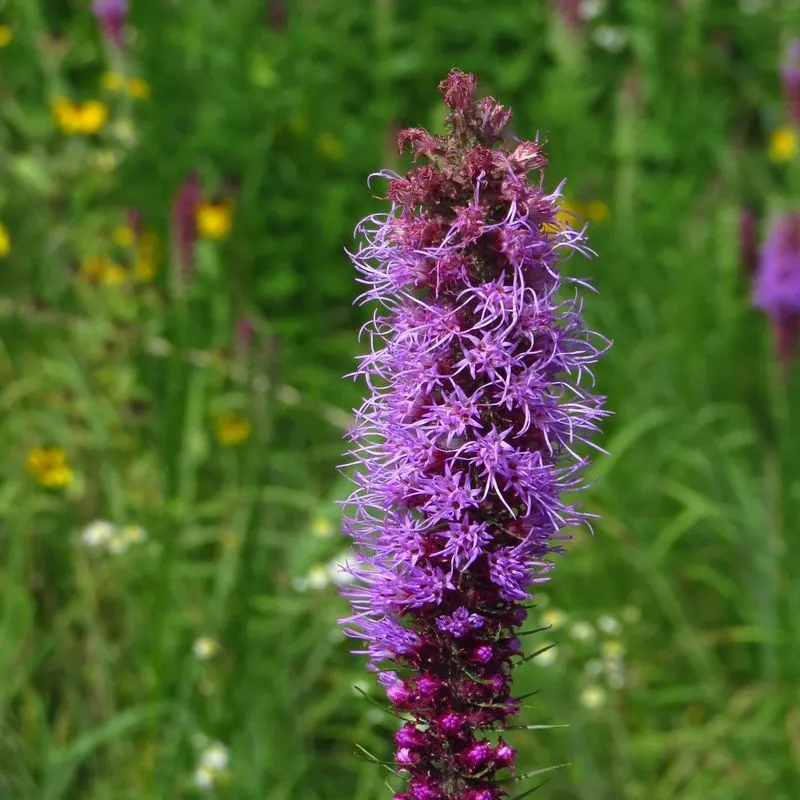
Blazing Star, also known as Liatris, is a staple in pollinator gardens, famed for its tall, feathery spikes of purple flowers. Butterflies and bees are frequent visitors, drawn to its nectar-rich blooms. This perennial adds a vertical element to garden designs, standing out in prairie or meadow settings.
Besides its beauty, Blazing Star is drought-resistant, making it a practical choice for low-maintenance landscapes. Its ability to thrive in challenging conditions while supporting pollinators highlights its value in sustainable gardening practices.
Golden Alexanders
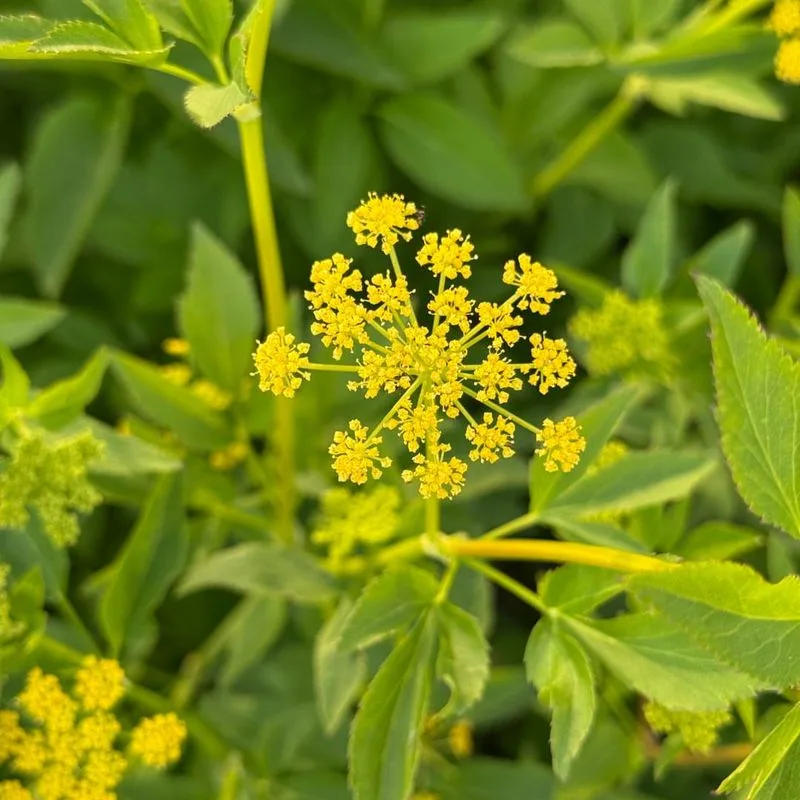
Golden Alexanders bring a cheerful burst of yellow to gardens, with flower clusters that are a magnet for bees and other pollinators. This perennial thrives in a variety of conditions, from full sun to partial shade, making it a versatile addition to any garden.
Its early blooming period provides an essential nectar source for pollinators in the spring. Golden Alexanders are not only beautiful but also play a critical role in the ecosystem, supporting the early life stages of many pollinator species.
Wild Bergamot
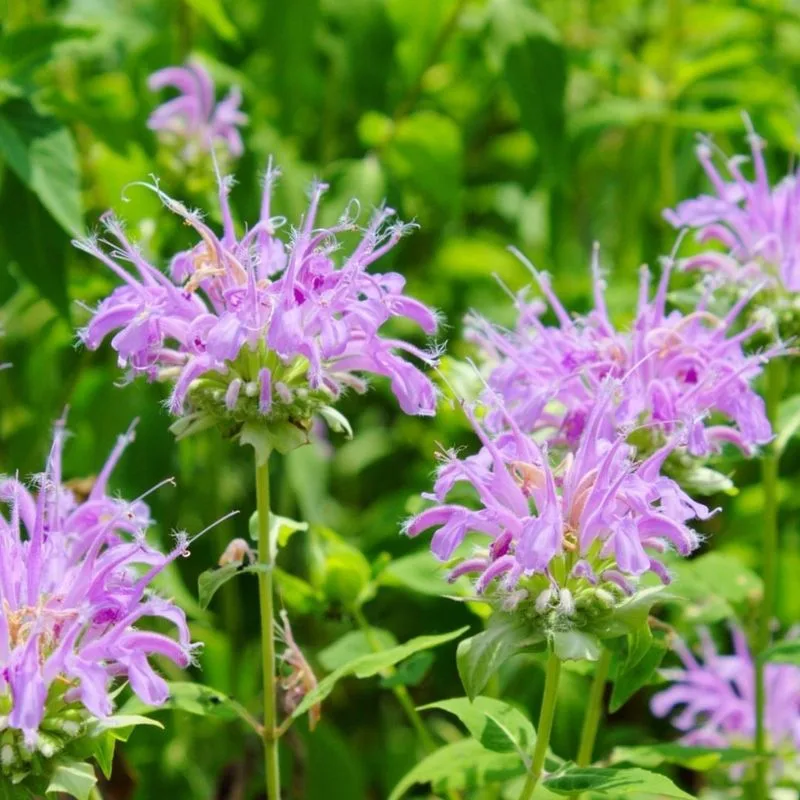
Wild Bergamot, with its clusters of lavender blooms, is a favorite among bees, butterflies, and hummingbirds. Known for its aromatic foliage, this perennial is both a sensory delight and a pollinator haven. It thrives in sunny locations, adding a touch of wild beauty to garden spaces.
Beyond its ornamental value, Wild Bergamot has a rich history of use in traditional medicine and herbal teas, providing multiple benefits. Its presence in your garden not only supports pollinator health but also connects you to centuries of herbal wisdom.
Spiderwort
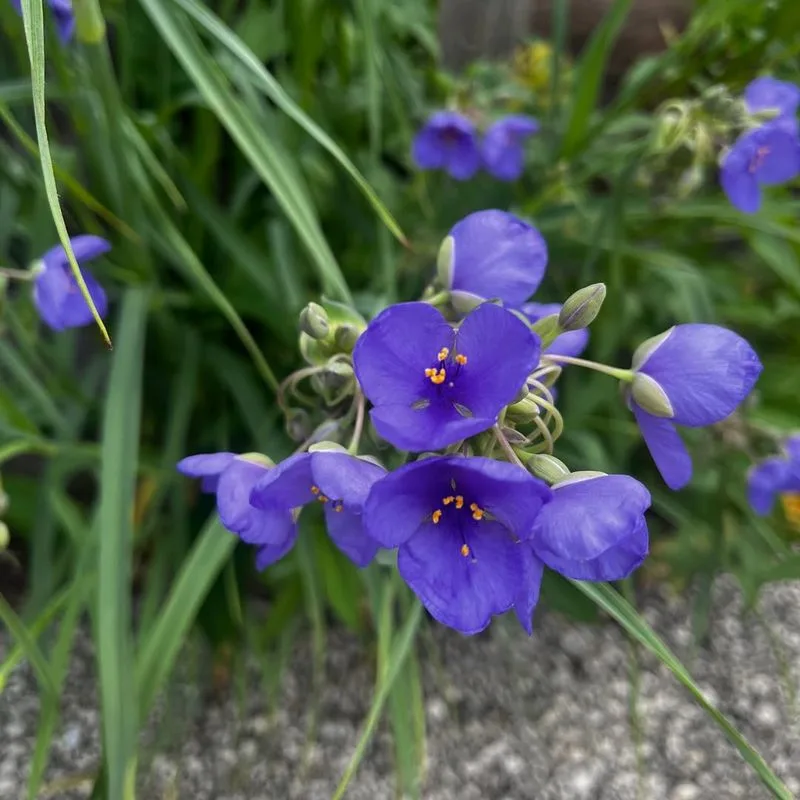
Spiderwort offers a unique appeal with its delicate blue or purple blooms and grass-like foliage. This perennial is a favorite among pollinators, especially bees, who flock to its nectar-rich flowers. Its ability to thrive in a range of conditions, from sun to partial shade, makes it a versatile choice.
The blooms open in the morning and close by afternoon, adding a dynamic quality to your garden. Beyond its beauty, Spiderwort’s easy-going nature makes it a garden staple for those looking to support pollinators effortlessly.
Nodding Onion
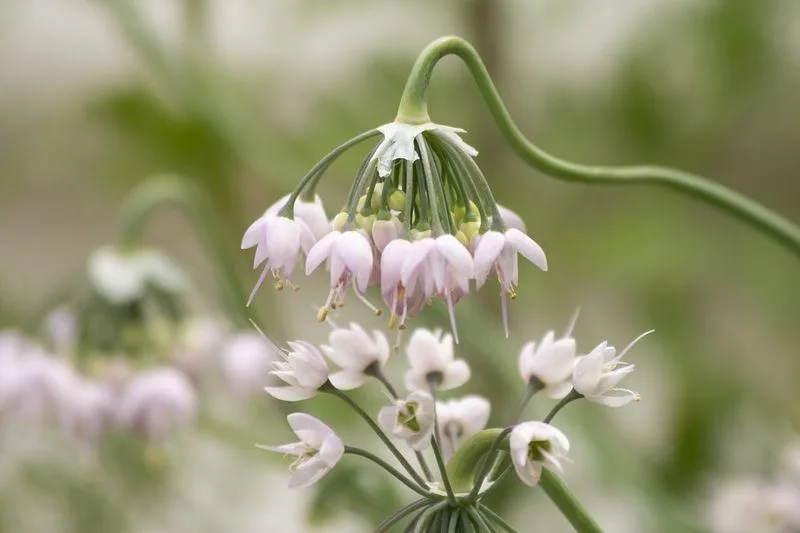
Nodding Onion is a charming perennial with graceful, nodding clusters of pink or white flowers. Its unique appearance makes it an attractive addition to rock gardens or borders. Pollinators, particularly bees, are drawn to its sweet nectar, making it a valuable plant for supporting biodiversity.
It’s not just its beauty that’s noteworthy; Nodding Onion is also known for its edible bulbs and leaves, offering a mild onion flavor to culinary dishes. This plant’s dual-purpose nature and pollinator-friendly attributes make it a must-have for diverse gardens.
Blue Vervain

Blue Vervain captivates with its tall, slender spikes of purple flowers, providing a striking vertical element to gardens. This perennial is highly attractive to pollinators, including bees and butterflies, who are drawn to its abundant nectar.
Thriving in wetland conditions, Blue Vervain is an excellent choice for gardens with moist soil. Its historical use in herbal remedies adds an extra layer of interest, connecting garden enthusiasts to traditional practices. This plant’s beauty and functionality make it a standout in pollinator-friendly landscapes.
Swamp Milkweed

Swamp Milkweed is a vital plant for supporting monarch butterflies, serving as both a nectar source and a host for larvae. Its clusters of pink blooms are a stunning addition to wetland or rain gardens, providing essential habitat for various pollinators.
Apart from its ecological importance, Swamp Milkweed’s sweet fragrance and attractive flowers make it a garden favorite. Its adaptability to moist conditions ensures it thrives where other plants might struggle, adding beauty and biodiversity to challenging garden spots.
Virginia Bluebells

Virginia Bluebells are a woodland gem, known for their stunning clusters of bell-shaped blue flowers. These spring bloomers are a favorite among early pollinators, including bees, who are drawn to their nectar.
Ideal for shaded garden areas, Virginia Bluebells add a touch of enchantment to the landscape, creating a serene and inviting atmosphere. Their presence signifies the arrival of spring, offering a burst of color and life after the winter months. This plant’s beauty and ecological value make it a cherished choice for nature lovers.
New England Aster
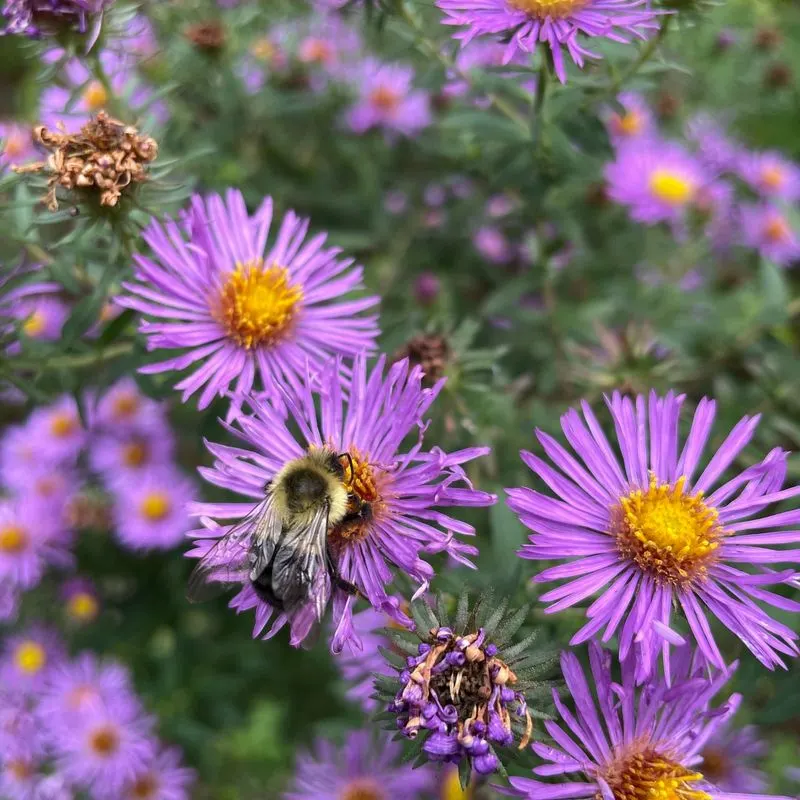
New England Aster brings a vibrant splash of color to autumn gardens with its showy purple flowers. This perennial is a late-season favorite for pollinators, providing much-needed nectar as other blooms fade.
Its bushy growth habit and stunning flowers create a striking visual display in meadows or garden beds. In addition to its beauty, the New England Aster has a historical role in traditional medicine, used to treat respiratory ailments. This plant’s dual purpose and pollinator-friendly nature make it a valuable addition to any garden.
Obedient Plant
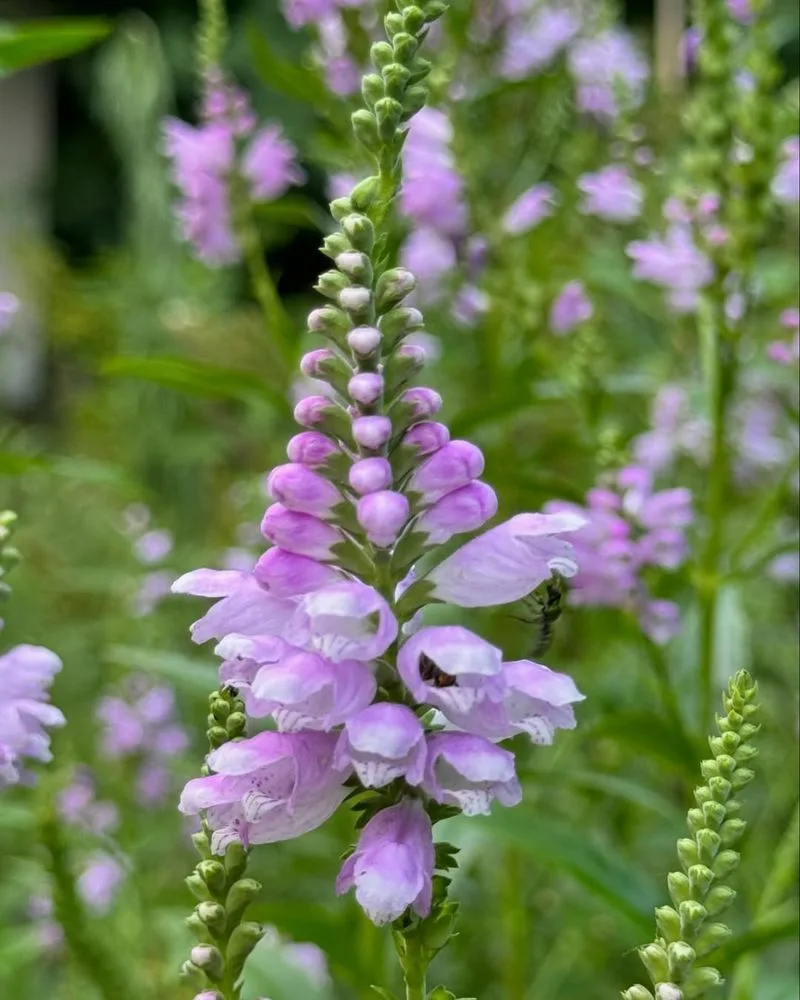
The Obedient Plant, with its spikes of pink blooms, earns its name from the ability of its flowers to stay in place when moved. This unique characteristic, coupled with its vibrant color, makes it a delightful garden addition.
Pollinators, including bees and hummingbirds, flock to its nectar-rich flowers, making it a valuable plant for biodiversity. Its adaptability to various soil conditions further enhances its appeal, ensuring lush growth in diverse garden settings. This plant’s playful nature and ecological benefits make it a standout choice for gardeners.
Sweet Joe Pye

Sweet Joe Pye is a delightful perennial with large clusters of soft pink flowers that attract a plethora of pollinators, including butterflies and bees. This plant thrives in moist conditions, making it ideal for riverside or rain gardens.
Apart from its visual charm, Sweet Joe Pye has historical significance in herbal medicine, used for its diuretic properties. Its presence in your garden not only supports pollinators but also connects you to a tradition of natural remedies. This blend of beauty and history sets it apart as a garden favorite.
Wild Columbine
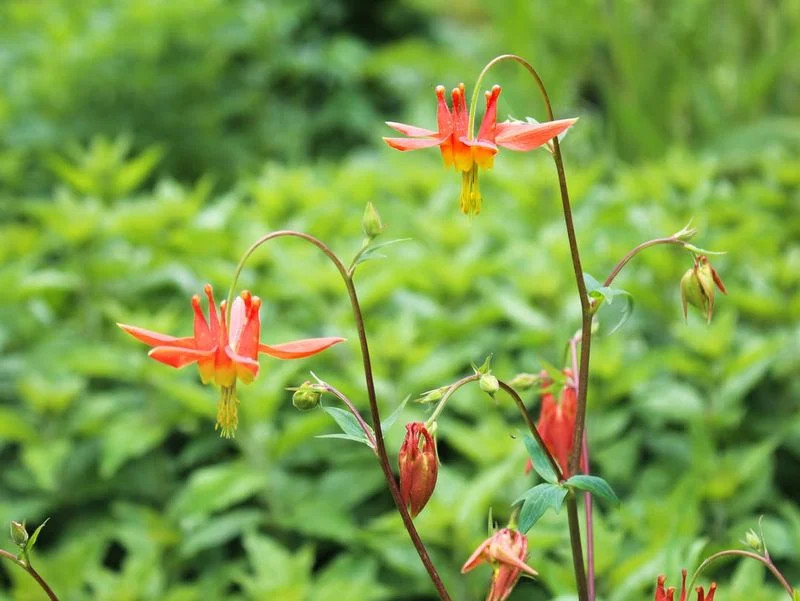
Wild Columbine captivates with its unique red and yellow flowers, which are a favorite among hummingbirds. This woodland perennial adds a whimsical touch to shaded gardens, with its delicate blooms nodding gracefully in the breeze.
Its early spring flowering period provides essential nectar for pollinators when few other food sources are available. Beyond its ecological role, Wild Columbine’s intriguing flower shape and color make it a standout choice for those seeking to add visual interest and biodiversity to their gardens.
Ironweed
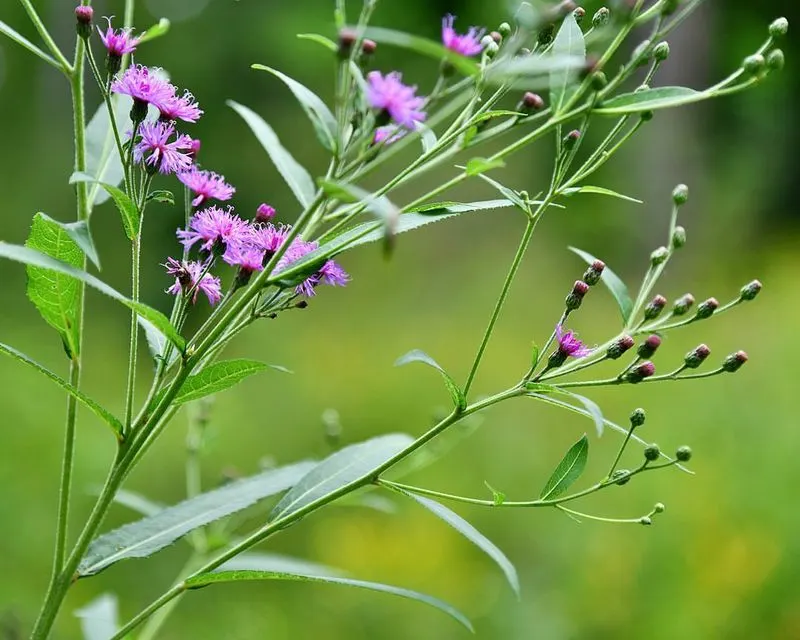
Ironweed stands tall with its vibrant purple flower clusters, attracting butterflies and bees in droves. This perennial is perfect for adding a splash of color to meadow or prairie gardens, thriving in full sun and moist soil.
Despite its tough-sounding name, Ironweed is a gentle giant in the garden, providing essential nectar for pollinators. Its robust growth and striking appearance make it a valuable addition to pollinator-friendly landscapes, ensuring a continuous supply of blooms and biodiversity.
Rattlesnake Master
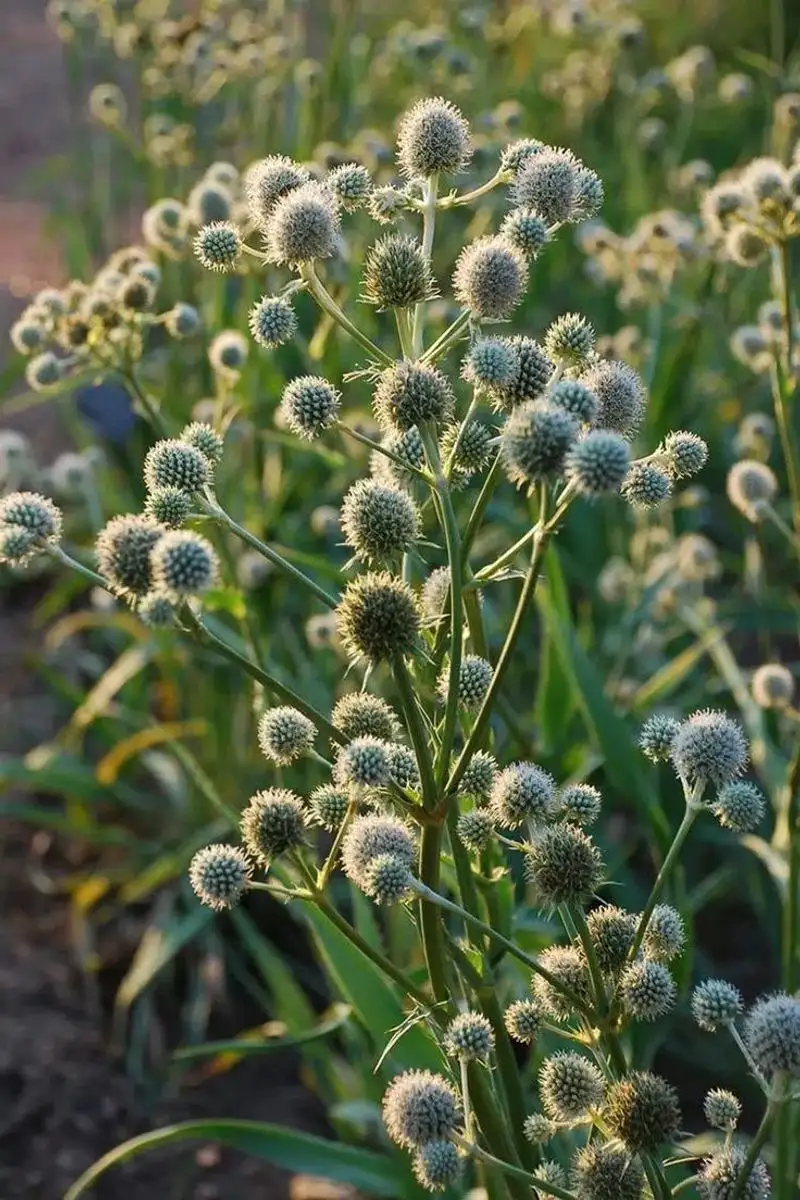
Rattlesnake Master, with its spiky green flowers, adds a unique architectural element to gardens. This prairie native attracts a range of pollinators, including bees and butterflies, who are drawn to its distinctive blooms.
Beyond its pollinator-friendly nature, Rattlesnake Master has an intriguing history, used by Native Americans for various medicinal purposes. Its presence in the garden not only supports wildlife but also brings a touch of the wild prairie to cultivated spaces. This plant’s unusual appearance and ecological value make it truly special.

